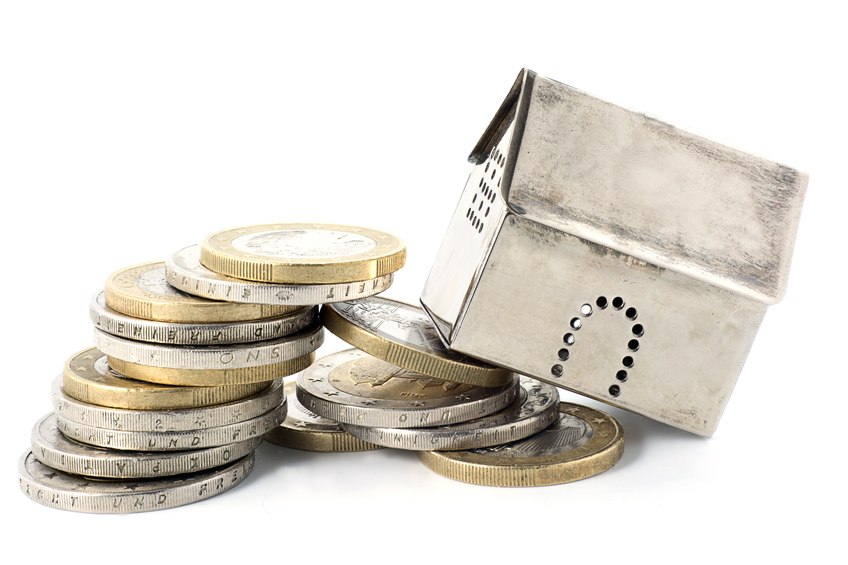Home » Uncategorised »
January House Price Growth Eased to 5.7%
This article is an external press release originally published on the Landlord News website, which has now been migrated to the Just Landlords blog.

House price growth in the three months to January eased to an annual rate of 5.7%, down from 6.5% in December, according to the latest House Price Index from Halifax.
January’s slowdown in house price growth followed two consecutive increases in the annual rate, from a low of 5.2% in October 2016. The annual rate recorded for the start of this year is much lower than the 10.0% peak hit in March last year.
On a quarterly basis, house prices rose by an average of 2.4% when compared to the previous quarter, which compares to the 2.5% rate recorded in December – the highest since March (+2.9%).
Month-on-month, house price growth dropped by a slight 0.9%.
The average house price in the UK, as of January, is £220,260.
A Housing Economist at Halifax, Martin Ellis, comments: “The quarterly and annual rates of house price growth remain robust, even though they are lower than in spring 2016. UK house prices continue to be supported by an ongoing shortage of property for sale, low levels of housebuilding, and exceptionally low interest rates.

January House Price Growth Eased to 5.7%
“These factors are unlikely to change materially during 2017. Nonetheless, weaker economic growth and increasing pressure on spending power, along with affordability constraints, are expected to dampen housing demand, resulting in some downward pressure on annual house price growth during the year.”
First time buyers
Halifax has also released its latest First Time Buyer Review, which suggests that the number of buyers purchasing their first homes has risen by 7% over the past 12 months, to reach 335,750.
This was the highest level since the start of the financial crisis in 2007, when it stood at 359,900. First time buyer numbers still remain 17% below the immediate pre-crisis peak of 402,800 in 2006, however.
UK home sales
In 2016, the total number of UK home sales was marginally higher (+0.4%) than in 2015, at 1.23m. Sales in the fourth quarter (Q4) of 2016 were 0.5% higher than in the previous quarter.
Despite this modest quarterly improvement, sales in Q4 2016 were 9% lower than in Q4 2015.
Mortgage approvals
The amount of mortgage approvals for house purchases – a leading indicator of completed property sales – rose by 1% between November and December last year, to 67,900.
This was the highest level recorded since March 2016, when approvals were boosted by the impending Stamp Duty surcharge for additional homes and buy-to-let properties.
Approvals in Q4 2016 were 9% higher than in Q3 2016, suggesting that property sales could increase over the coming months.
Housing supply
Regardless, housing supply remains very low across the country. New instructions failed to pick up in December, marking the tenth consecutive month without any improvement in new listings.
As a result, stock levels remain close to a record low, which Halifax claims is severely restricting choice for prospective buyers and constraining market activity.
The Founder and CEO of online estate agent eMoov.co.uk, Russell Quirk, comments on the report: “There are those that will, of course, see this marginal monthly drop in house prices as a fulfilment of the Armageddon-style prophecies that have plagued the UK market since the start of last year, with many widely predicting a troublesome year ahead for property.
“But these figures demonstrate the robust, Teflon-style nature of the UK market as, despite a turbulent year for property, it has weathered the storm and continues to see upward price growth both annually and when compared to the last quarter.”
He continues: “January is always a lethargic month for UK property as a result of the Christmas break, and so any fall in house prices at this time of year should be taken with a pinch of salt, rather than a handful of panic. Mortgage approvals have continued to increase, and demand remains woefully low, so it is likely that come this time next month, prices will be on the up again across the board, and this monthly drop will have righted itself.
“Had any other market around the world been subject to such a sustained period of scaremongering and uncertainty amongst buyer and seller as the UK market has in the last year, I expect it would be a different story to the one we are seeing here.”
The CIO and Co-Founder of LendInvest, Ian Thomas, also says: “Figures from Halifax in January indicated higher than expected house price growth, as constrained housing supply maintained buoyancy in prices.
“While there will be growth in prices this year, measures in the Government’s Housing White Paper announced today will tackle the gridlock in supply and will ultimately determine the scale of price growth.”
We will keep you up to date with the release and content of the Housing White Paper at Landlord News.




